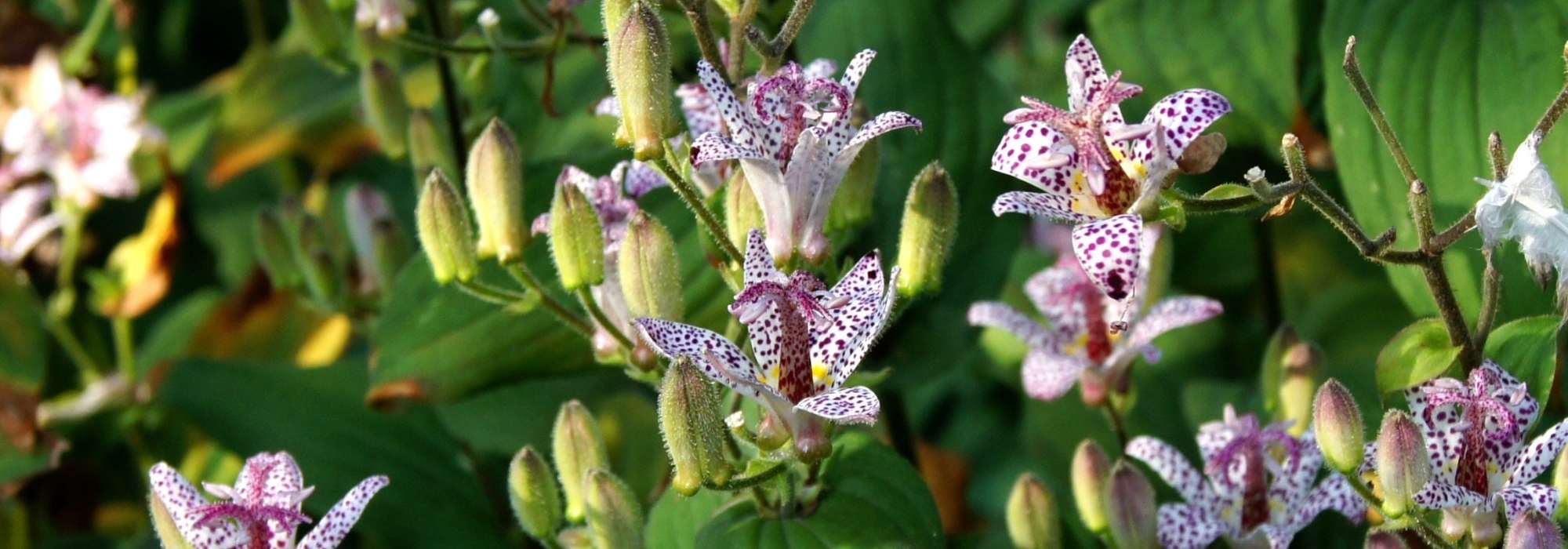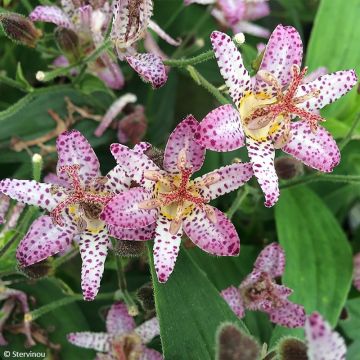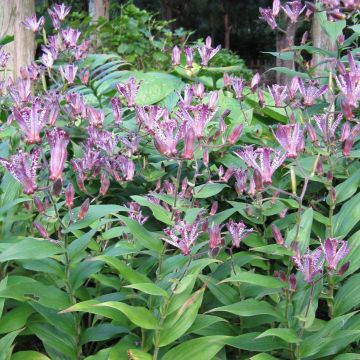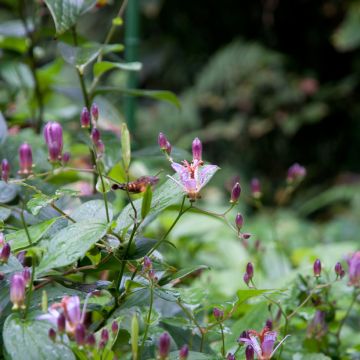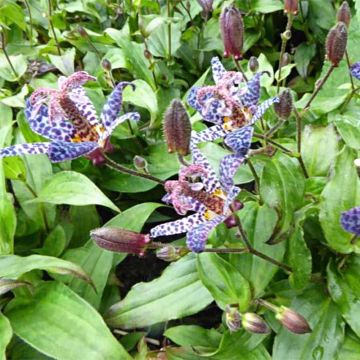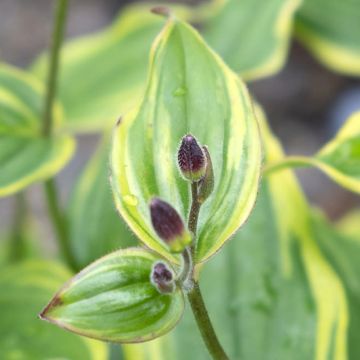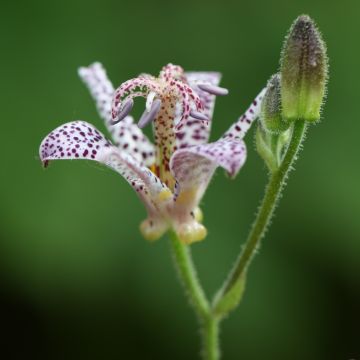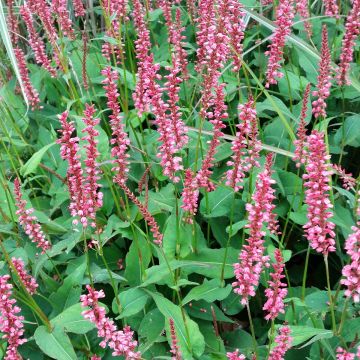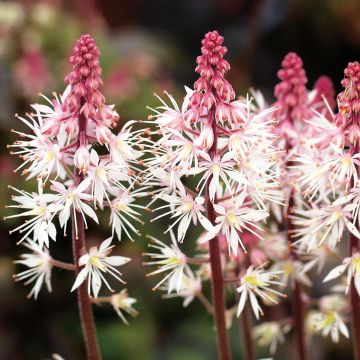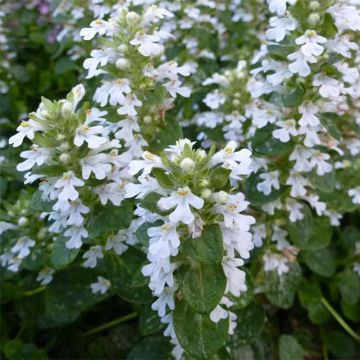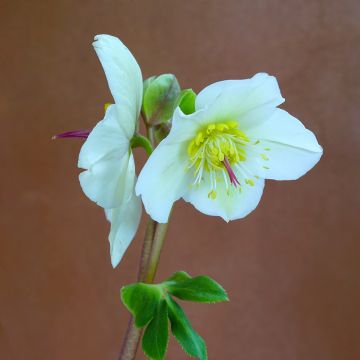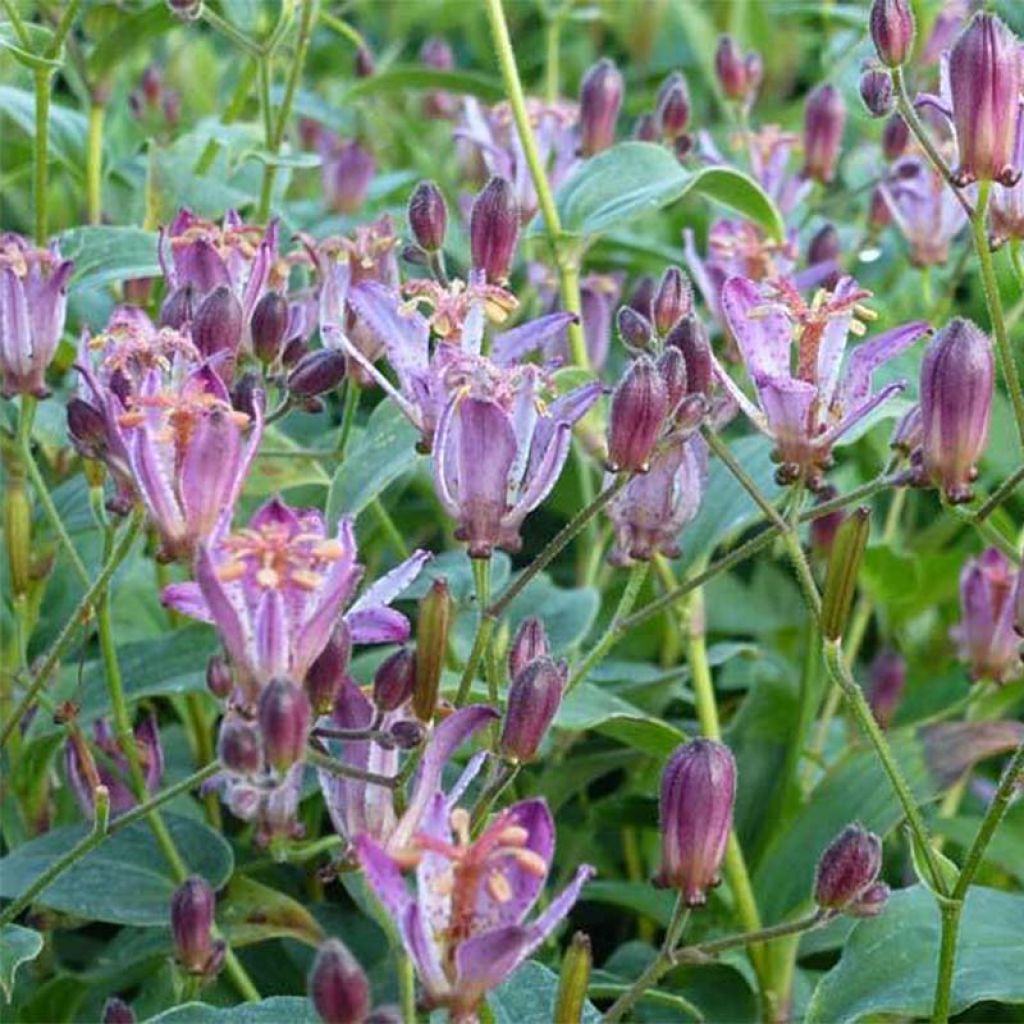

Tricyrtis hirta Taiwan Abdane - Toad Lily
Tricyrtis hirta Taiwan Abdane - Toad Lily
Tricyrtis hirta Taiwan Abdane
Toad Lily
Unfortunately, the package was damaged upon delivery and the return process did not go smoothly.
sam, 19/09/2024
Special offer!
Receive a €20 voucher for any order over €90 (excluding delivery costs, credit notes, and plastic-free options)!
1- Add your favorite plants to your cart.
2- Once you have reached €90, confirm your order (you can even choose the delivery date!).
3- As soon as your order is shipped, you will receive an email containing your voucher code, valid for 3 months (90 days).
Your voucher is unique and can only be used once, for any order with a minimum value of €20, excluding delivery costs.
Can be combined with other current offers, non-divisible and non-refundable.
Home or relay delivery (depending on size and destination)
Schedule delivery date,
and select date in basket
This plant carries a 12 months recovery warranty
More information
We guarantee the quality of our plants for a full growing cycle, and will replace at our expense any plant that fails to recover under normal climatic and planting conditions.

Would this plant suit my garden?
Set up your Plantfit profile →
Description
The Tricyrtis hirta'Taiwan Abdane, sometimes nicknamed Orchid Lily or Toad Lily, is a fascinating Japanese perennial with a refined appearance and a robust health. It hides, in the freshness of the undergrowth, a flowering as original as it is delightful. Its flowers, resembling small purple lilies with violet spots, appear in late summer, carried in terminal clusters by flexible stems adorned with beautiful dark green and glossy leaves. This plant, anchored on a powerful stump, is fully hardy and very durable in humus-bearing and moist soil.
Tricyrtis hirta is a rhizomatous perennial plant of the lily family, mainly native to the humid forests of Japan and Taiwan. This highly ornamental species is now widely cultivated in all temperate climate countries, especially in the enlightened gardens of French amateurs. Planted in a rather cool, shaded area with some sunlight, this 'Taiwan Abdane' Toad Lily grows rapidly to a height of 70 cm (28in) and spreads quite quickly thanks to its slightly running stump. The deciduous clumps have flexible but sturdy stems, quite thin, bearing sheathing leaves 10 cm (4in) long, ovate with cordate bases, of a shiny dark green. They are crossed by prominent and parallel veins. Flowering takes place from August to October, in the form of terminal cymes bearing beautiful small flowers with a diameter of 3 cm (1in), star-shaped and well open. They consist of 6 mauve tepals with a white base, intensely speckled with violet-purple, and a central dark pink column, called a spur, bearing stigmas with the same shades and patterns. A white throat occupies the center of the corolla.
The Trycirtis has stimulated the imagination of gardeners: nicknamed Orchid Lily for the shape of its flower, Toad Lily for a reason that escapes us (perhaps because it prefers freshness and humidity, its flower is spotted like the skin of a batrachian, or maybe out of contradiction?).
Still too little used in our gardens, it will happily share the territory with hostas and ferns, offering its flowers during a season when most other undergrowth flowers have faded. While early frosts may harm its flowering, it is a very hardy plant that will bring an exotic and unexpected touch to a shady rockery. Perfectly at ease among the round and mossy stones of a Japanese garden, it also thrives well in a pot on a shaded terrace, where its lanceolate foliage is decorative from spring to autumn.
Attention, young shoots are often targeted by small grey slugs!
Tricyrtis hirta Taiwan Abdane - Toad Lily in pictures
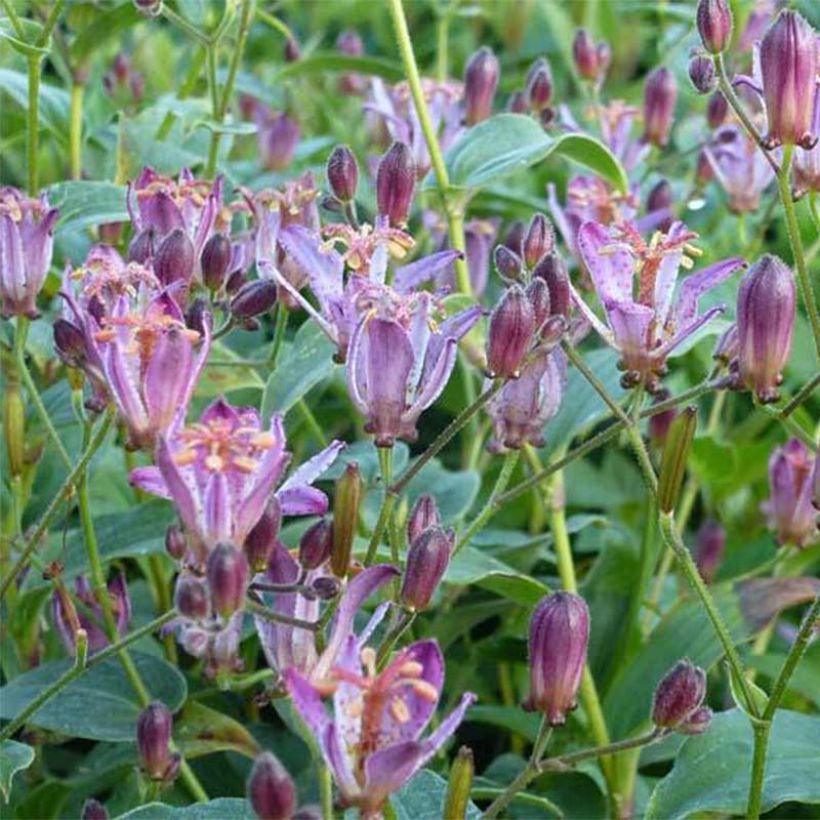

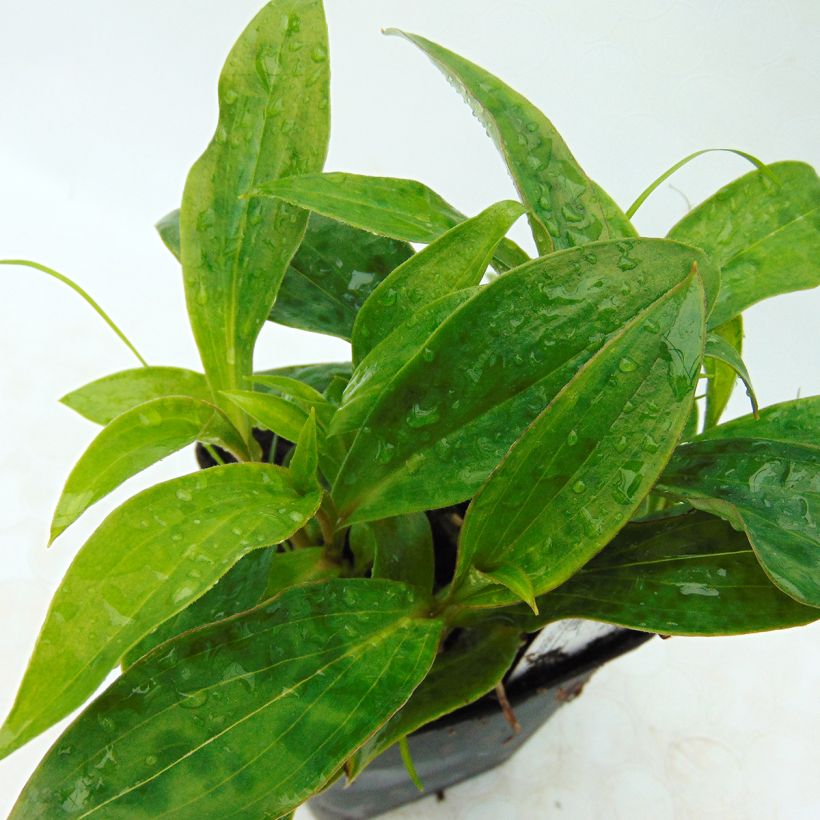

Flowering
Foliage
Plant habit
Botanical data
Tricyrtis
hirta
Taiwan Abdane
Convallariaceae
Toad Lily
Cultivar or hybrid
Other Tricyrtis - Japanese Toad Lily
View all →Planting and care
Plant your Taiwan Abdane Trycirtis hirta in a somewhat shady to shady location in the hottest regions of our country. However, it can be planted in light sun north of the Loire River if watering is consistent and the soil remains constantly moist.
Place it in a fresh, humus-bearing, fairly rich, slightly acidic or neutral, wind-sheltered soil, both in the ground and in a pot, to prevent the tall flowering stems from being knocked down. The flowering will be delayed if the summer is dry, but will return with the September rains, which is not a big issue in regions where autumn is mild and long. However, when frost comes early, a late flowering will be destroyed by the cold. In this case, the soil should not completely dry out in spring and summer, which means the plant should be regularly watered during dry periods. Mulching will help keep the soil cool at the base of the plant.
Beware, young shoots are often targeted by small gray slugs. Spread ash, crushed eggshells, or alternatively, use granules suitable for organic agriculture (which are not harmful to animals that consume slugs).
Planting period
Intended location
Care
Planting & care advice
-
, onOrder confirmed
Reply from on Promesse de fleurs
Similar products
Haven't found what you were looking for?
Hardiness is the lowest winter temperature a plant can endure without suffering serious damage or even dying. However, hardiness is affected by location (a sheltered area, such as a patio), protection (winter cover) and soil type (hardiness is improved by well-drained soil).

Photo Sharing Terms & Conditions
In order to encourage gardeners to interact and share their experiences, Promesse de fleurs offers various media enabling content to be uploaded onto its Site - in particular via the ‘Photo sharing’ module.
The User agrees to refrain from:
- Posting any content that is illegal, prejudicial, insulting, racist, inciteful to hatred, revisionist, contrary to public decency, that infringes on privacy or on the privacy rights of third parties, in particular the publicity rights of persons and goods, intellectual property rights, or the right to privacy.
- Submitting content on behalf of a third party;
- Impersonate the identity of a third party and/or publish any personal information about a third party;
In general, the User undertakes to refrain from any unethical behaviour.
All Content (in particular text, comments, files, images, photos, videos, creative works, etc.), which may be subject to property or intellectual property rights, image or other private rights, shall remain the property of the User, subject to the limited rights granted by the terms of the licence granted by Promesse de fleurs as stated below. Users are at liberty to publish or not to publish such Content on the Site, notably via the ‘Photo Sharing’ facility, and accept that this Content shall be made public and freely accessible, notably on the Internet.
Users further acknowledge, undertake to have ,and guarantee that they hold all necessary rights and permissions to publish such material on the Site, in particular with regard to the legislation in force pertaining to any privacy, property, intellectual property, image, or contractual rights, or rights of any other nature. By publishing such Content on the Site, Users acknowledge accepting full liability as publishers of the Content within the meaning of the law, and grant Promesse de fleurs, free of charge, an inclusive, worldwide licence for the said Content for the entire duration of its publication, including all reproduction, representation, up/downloading, displaying, performing, transmission, and storage rights.
Users also grant permission for their name to be linked to the Content and accept that this link may not always be made available.
By engaging in posting material, Users consent to their Content becoming automatically accessible on the Internet, in particular on other sites and/or blogs and/or web pages of the Promesse de fleurs site, including in particular social pages and the Promesse de fleurs catalogue.
Users may secure the removal of entrusted content free of charge by issuing a simple request via our contact form.
The flowering period indicated on our website applies to countries and regions located in USDA zone 8 (France, the United Kingdom, Ireland, the Netherlands, etc.)
It will vary according to where you live:
- In zones 9 to 10 (Italy, Spain, Greece, etc.), flowering will occur about 2 to 4 weeks earlier.
- In zones 6 to 7 (Germany, Poland, Slovenia, and lower mountainous regions), flowering will be delayed by 2 to 3 weeks.
- In zone 5 (Central Europe, Scandinavia), blooming will be delayed by 3 to 5 weeks.
In temperate climates, pruning of spring-flowering shrubs (forsythia, spireas, etc.) should be done just after flowering.
Pruning of summer-flowering shrubs (Indian Lilac, Perovskia, etc.) can be done in winter or spring.
In cold regions as well as with frost-sensitive plants, avoid pruning too early when severe frosts may still occur.
The planting period indicated on our website applies to countries and regions located in USDA zone 8 (France, United Kingdom, Ireland, Netherlands).
It will vary according to where you live:
- In Mediterranean zones (Marseille, Madrid, Milan, etc.), autumn and winter are the best planting periods.
- In continental zones (Strasbourg, Munich, Vienna, etc.), delay planting by 2 to 3 weeks in spring and bring it forward by 2 to 4 weeks in autumn.
- In mountainous regions (the Alps, Pyrenees, Carpathians, etc.), it is best to plant in late spring (May-June) or late summer (August-September).
The harvesting period indicated on our website applies to countries and regions in USDA zone 8 (France, England, Ireland, the Netherlands).
In colder areas (Scandinavia, Poland, Austria...) fruit and vegetable harvests are likely to be delayed by 3-4 weeks.
In warmer areas (Italy, Spain, Greece, etc.), harvesting will probably take place earlier, depending on weather conditions.
The sowing periods indicated on our website apply to countries and regions within USDA Zone 8 (France, UK, Ireland, Netherlands).
In colder areas (Scandinavia, Poland, Austria...), delay any outdoor sowing by 3-4 weeks, or sow under glass.
In warmer climes (Italy, Spain, Greece, etc.), bring outdoor sowing forward by a few weeks.






























